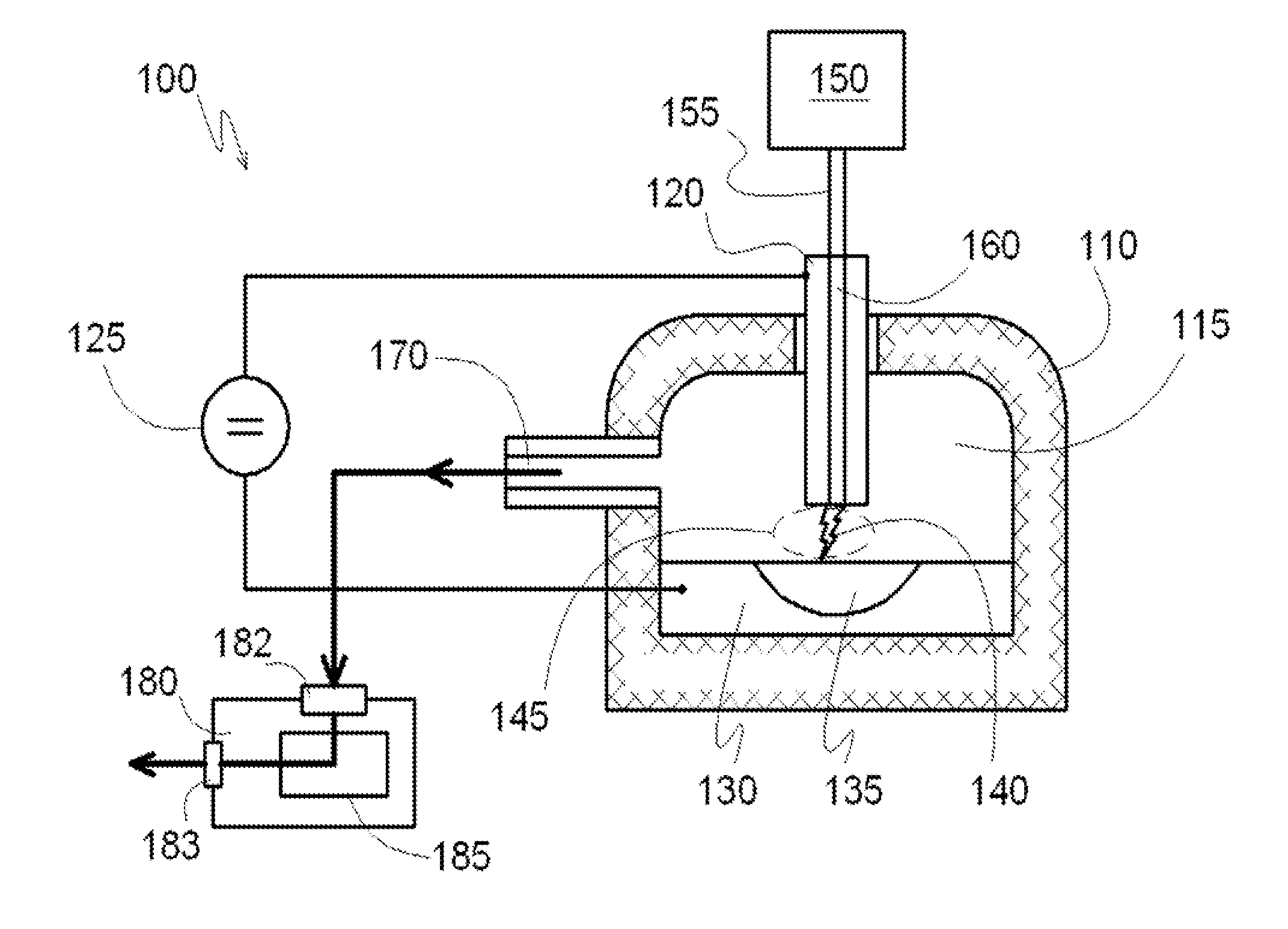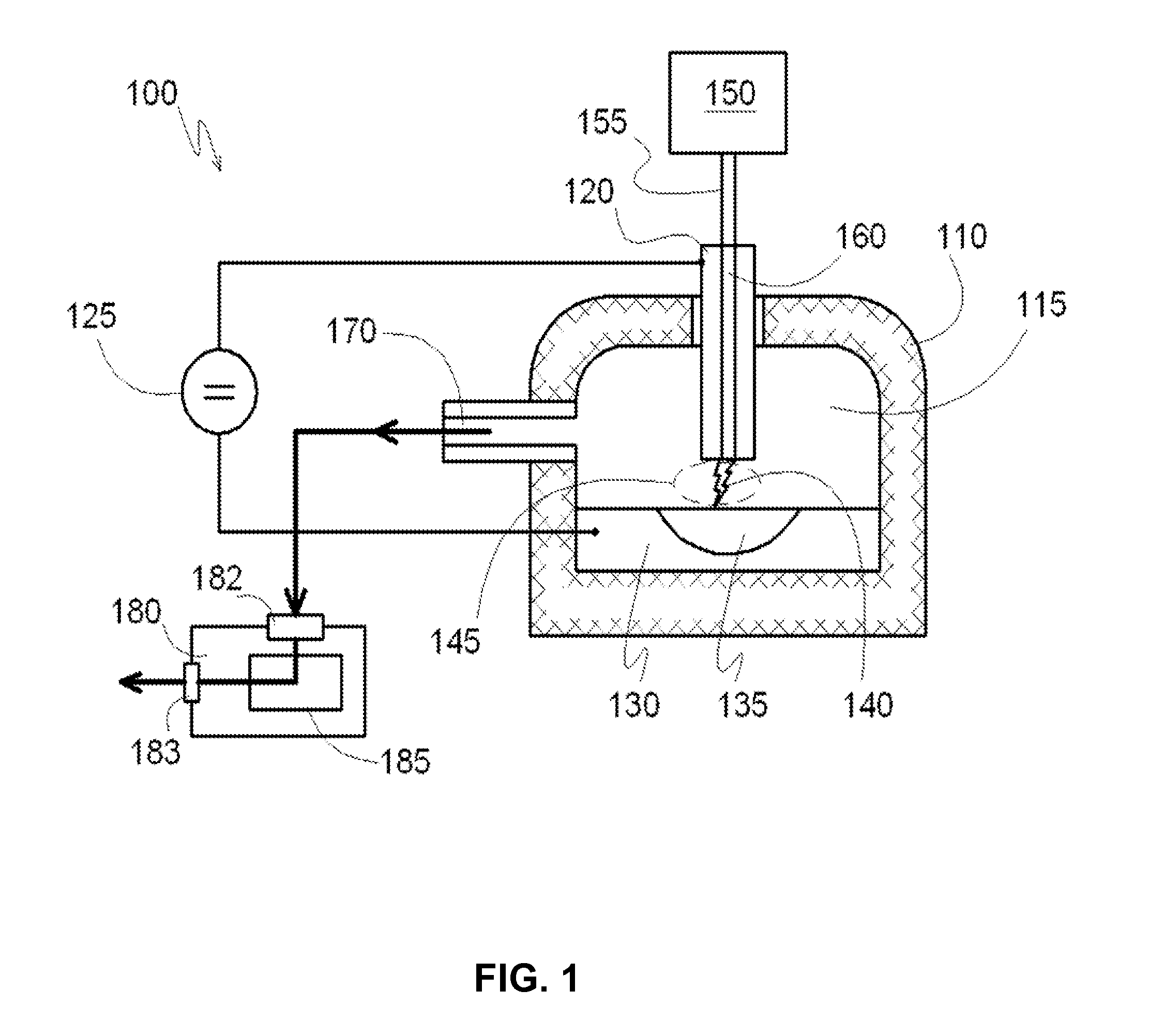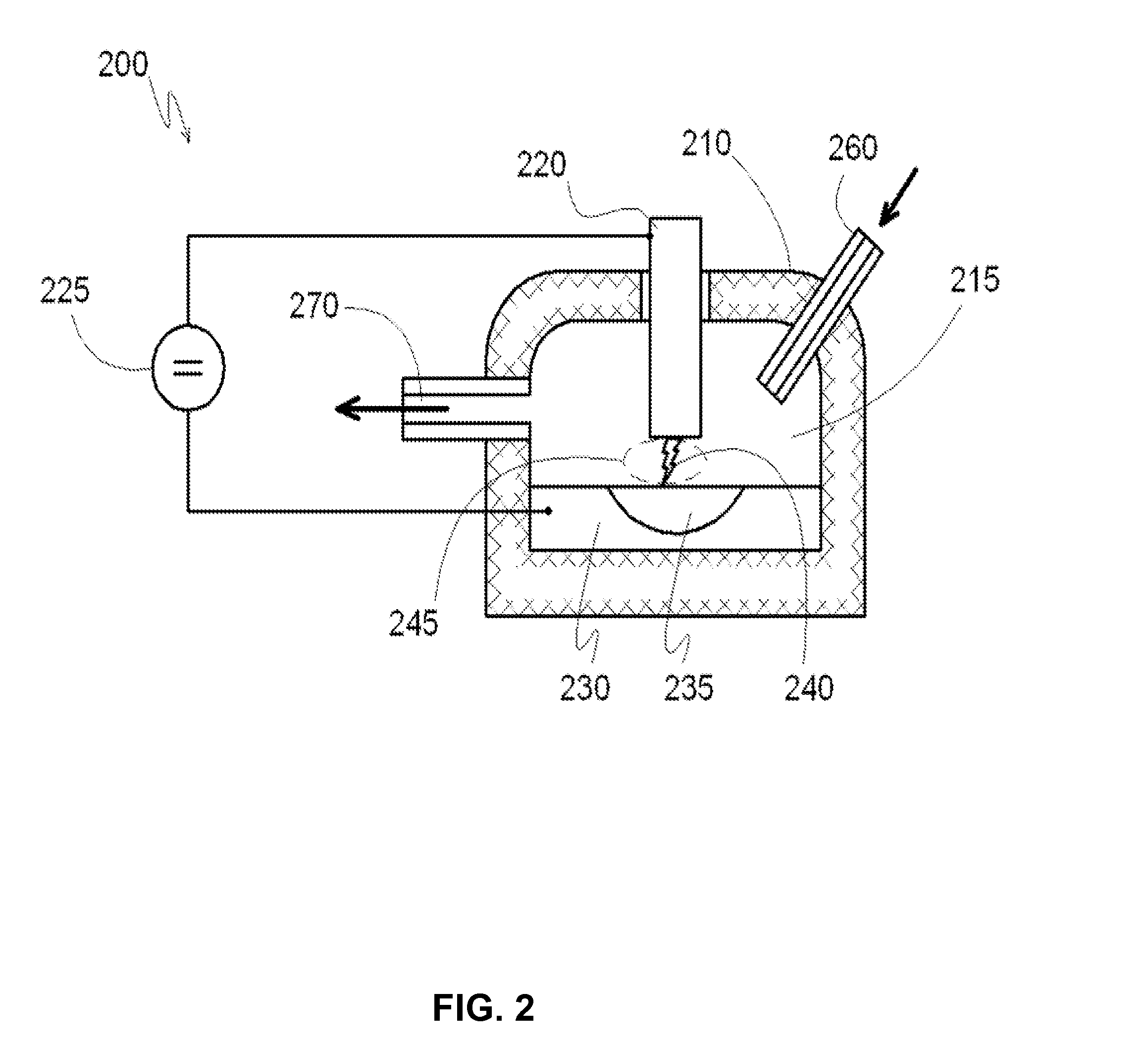System and method for producing carbon nanotubes
a carbon nanotube and carbon nanotube technology, applied in the direction of carbonsing rags, chemical/physical/physical-chemical processes, energy-based chemical/physical/physical-chemical processes, etc., can solve the problems of no more than about 25% to 30% of the carbon nanotube, and the difficulty of varying the diameter and length of the nanotube formed, so as to facilitate the separation of the synthesized nanotubes
- Summary
- Abstract
- Description
- Claims
- Application Information
AI Technical Summary
Benefits of technology
Problems solved by technology
Method used
Image
Examples
example 1
[0076]In a reactor system for producing carbon nanotubes containing two separate reaction chambers 412 and 414 connected by a discharge channel 405, for example as described with reference to FIG. 4 is provided, wherein the volume of each reaction chamber is about 5 m3. At the bottom of each reaction chamber 412 and 414 reservoirs are formed which are open in the volume of the respective reaction chambers. The reservoirs are lined with refractory bricks and completely filled with a catalyst comprising monolithic iron forming electrodes 430 and 440. The volume of each reservoir is about 50 liters, and each is equipped with a conductor for supplying electrical voltage directly to the metal catalyst electrodes 430 and 440. Each reaction chamber 412 and 414 has a respective inlet port 432 and 434 for introducing gaseous hydrocarbons into the reactor chambers and a respective outlet port 442 and 444 for extracting the reaction products from each respective reaction chamber.
[0077]The disc...
example 2
[0081]The reactor has three chambers, as shown in FIG. 6. Inside, each reaction chamber is lined with fire-resistant bricks. The first reaction chamber, which has a volume of about 1 m3, and the second reaction chamber, which has a volume of about 2 M3, are connected by a discharge channel and a gas pipe. The second reaction chamber is connected to the third reaction chamber (which has a volume of about 7 m3) by a gas pipe. First reaction chamber has a chamber for supplying gaseous hydrocarbons. The third reaction chamber has a channel for outflow of gas from the reaction chamber. The first and second reaction chambers have electrodes that include a catalyst—monolithic iron. The volume of each reservoir is about 50 liters. Each reservoir has a conductor to supply the voltage directly to the metal. The reservoirs with the metal function as electrodes.
[0082]The discharge channel that connects the first and second chambers is in the form of a symmetrical arc. Each cross-section of the ...
example 3
[0085]The reactor for manufacturing of carbon nanotubes includes three sequentially arranged reaction chambers, as shown in FIG. 6. Inside, each reaction chamber is lined with fire resistant brick. The first reaction chamber (in order from right to left) has a volume of 0.4 m3, and the second reaction chamber, which has a volume of 0.6 m3, are connected to each other by a discharge channel and a gas pipe. The second reaction chamber is connected to the third reaction chamber, which has a volume of 1 m3, by a gas pipe. Each chamber includes channel / ports for supplying of gaseous hydrocarbons. The third reaction chamber has a channel for pumping out the gas from the reaction chamber volume. In the bottom of the first and second reaction chambers there are reservoirs, which are open into the volume of their corresponding reaction chambers, lined with fire resistant brick, and fully filled with a catalyst—monolithic iron. The volume of each reservoir is 50 liters.
[0086]Each reservoir is...
PUM
| Property | Measurement | Unit |
|---|---|---|
| temperature | aaaaa | aaaaa |
| length | aaaaa | aaaaa |
| diameter | aaaaa | aaaaa |
Abstract
Description
Claims
Application Information
 Login to View More
Login to View More - R&D
- Intellectual Property
- Life Sciences
- Materials
- Tech Scout
- Unparalleled Data Quality
- Higher Quality Content
- 60% Fewer Hallucinations
Browse by: Latest US Patents, China's latest patents, Technical Efficacy Thesaurus, Application Domain, Technology Topic, Popular Technical Reports.
© 2025 PatSnap. All rights reserved.Legal|Privacy policy|Modern Slavery Act Transparency Statement|Sitemap|About US| Contact US: help@patsnap.com



